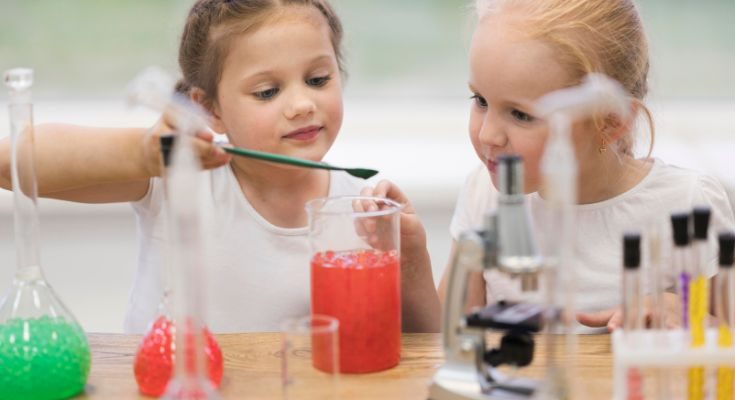Do you want to explore the world of science in a fun and exciting way? Science experiments that you can do at home are a great way to learn and have fun at the same time. Whether you are a student looking to improve your grade or a parent wanting to entertain your kids, these fun science experiments promise to educate and entertain. With simple items that you can easily find around the house, you can create awesome scientific projects in the comfort of your own home.
1. Making Colorful Rainbows
Making a colorful rainbow is a great way to explore the scientific concept of refraction. To start, you will need a shallow pan filled with water, a white piece of paper, and a flashlight. Place the paper in the pan and shine the flashlight on it. You should immediately see a spectrum of colors being created. The light is being bent when it travels through the water, which causes it to split into different colors. You can also change the angle of the flashlight to see how it affects the colors you see. You can also try experimenting with different colors of paper to observe how the colors change.
2. Creating a Volcano
Making a volcano is a classic science experiment that can be done right at home. To start, you will need baking soda, vinegar, some dish soap, and food coloring. Create a volcano shape with the baking soda and place it in an empty bowl. Mix together the vinegar, dish soap, and food coloring. Pour the mixture into the volcano and watch as it erupts in a colorful display. The explosive reaction is caused by the mixture of the acid in the vinegar and the base in the baking soda.
3. Growing a Crystal Garden
Growing a crystal garden is a perfect way to explore the process of crystallization. To start, you will need some Epsom salt, hot water, and food coloring. Dissolve the Epsom salt in the hot water and add the food coloring. Place the solution in a shallow dish and let it sit for a few days. After a few days, you should start to see crystals forming in the solution. The water molecules will attach to the Epsom salt molecules and form crystals. You can also experiment with different colors to create a beautiful crystal garden.
4. Exploring the Physics of Flight
Exploring the physics of flight is a great way to learn about aerodynamics and lift. To start, you will need some paper and a few simple supplies. Fold the paper into an aerodynamic shape and attach a straw to the bottom. Blow through the straw and observe how the paper glides through the air. The air pressure from your breath pushes the paper forward and creates lift. You can also try different shapes and sizes of paper to explore how aerodynamics can affect the flight of the paper.
Conclusion
These four fun science experiments are just a few examples of the exciting things you can do at home. With just a few simple supplies, you can explore a variety of scientific concepts and have a great time doing it. So grab your supplies and get ready for some fun science experiments that you can do right at home!



